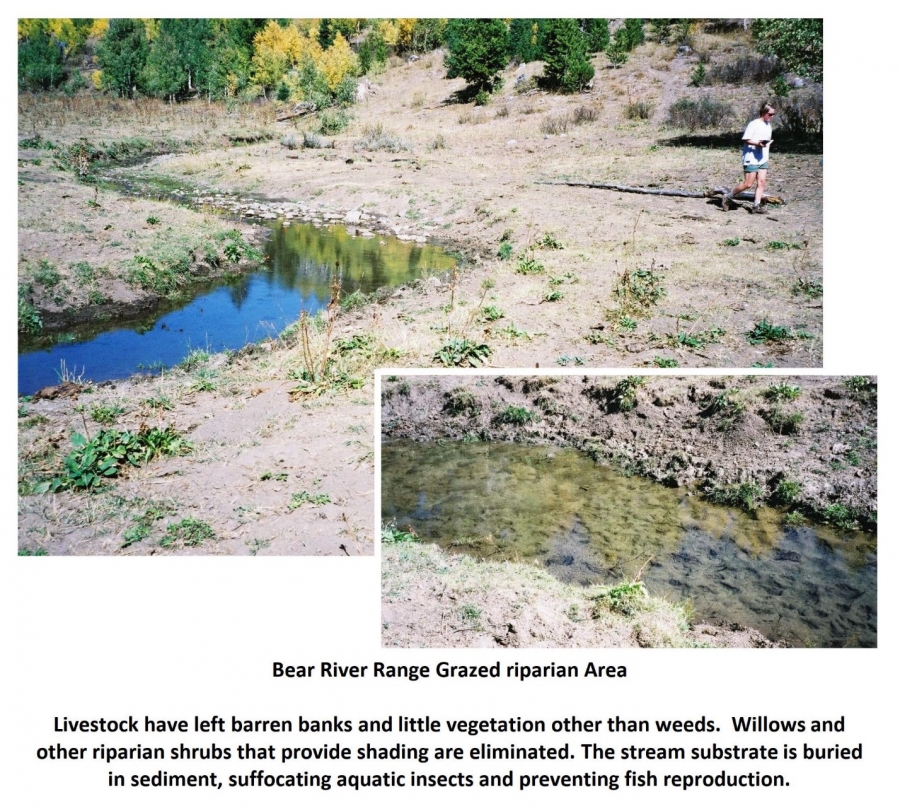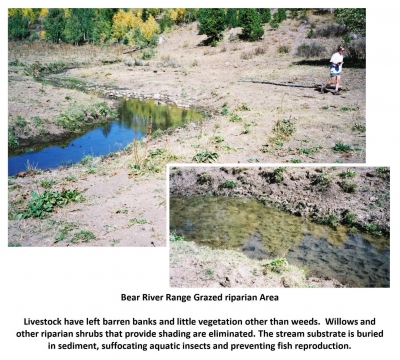Y2U Staff Ecologist John Carter on the effects of overgrazing, rampant OHV use, and more neglectful practices that are allowed in our National Forests.
"Even if prescribed fires could provide a benefit, the benefits would be negated if livestock remain and continue to destroy our aspen communities, denude and pollute our streams and springs, and create thickets of conifer saplings. The Forest Service continues business as usual and is budget-driven to propose projects such as these 2,000,000 acres of prescribed fire and vegetation manipulations because they can fit into the wildfire program. [22]
This fire-driven set of priorities must change. The Forest Service must recognize the contribution of timber harvest and livestock grazing to loss of carbon storage in plant communities and soils, increased carbon emissions, and degradation of wildlife habitat. It must define, protect and restore wildlife migration corridors. It must act to reduce road density with its associated motorized recreation, and greatly reduce or eliminate livestock grazing thru permit action and mechanisms such as voluntary permit retirement and buyouts. Until this happens, Forest Service managed lands will remain in the lowest protection status while continuing to exacerbate carbon loss and climate change."


